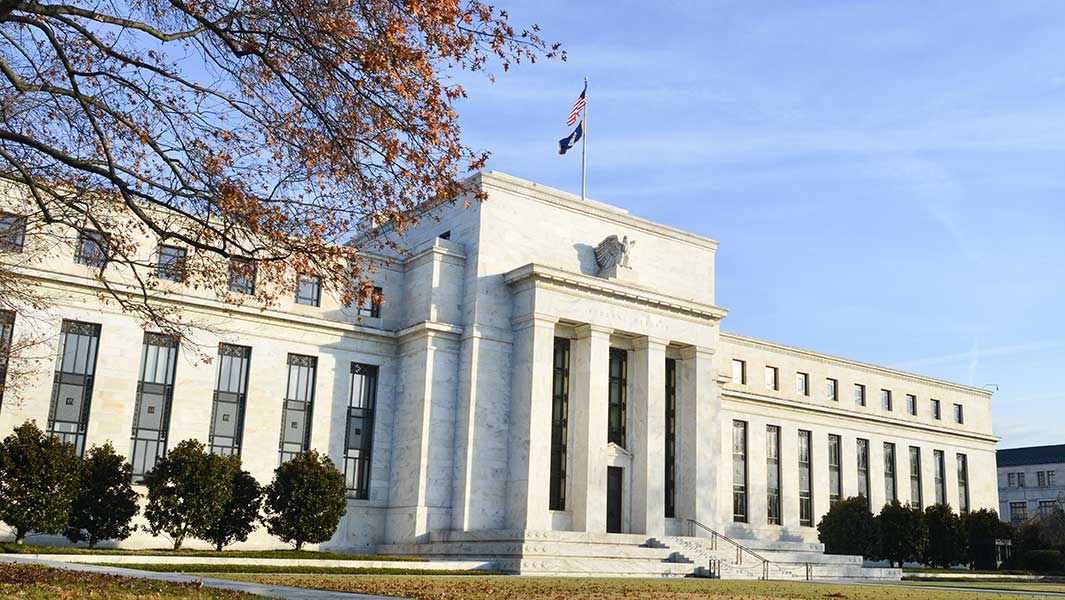The November jobs report showed that payroll gains bounced back, after labor market faltered in October hiring amid the Boeing (BA) strike and a hit from Hurricane Milton. The unemployment rate edged higher, as expected.
The jobs report has been one of two big hurdles potentially standing in the way of a rate cut at the Dec. 18 Federal Reserve meeting, with next week’s set of inflation reports being the other. The Fed has set a high bar for skipping a rate cut, but it’s not out of the question, with inflation progress stalling recently and the S&P 500 surging.
↑
X
This Is How The Jobs Report Data Influences The Fed And Interest Rates
8:47 a.m. ET
Labor Force Drop Something To Watch
The Fed won’t worry too much about a one-month drop in the labor force, but labor force participation will be key to watch in the months to come. Fed Chairman Jerome Powell noted on Wednesday that the labor-force boost from immigration has substantially slowed in the second half of 2024.
8:46 a.m. ET
Different Message From Household Survey
The household survey showed that the ranks of the employed actually fell by 355,000, while the labor force declined by 193,000. The difference, though thrown a bit off by rounding, meant a 161,000 rise in the ranks of the unemployed.
8:41 a.m. ET
S&P 500 Futures Rise Slightly
S&P 500 futures rose 0.2% shortly after the November jobs report. The 10-year Treasury yield dipped two basis points to 4.16%, flirting with the lowest levels in a month.
8:39 a.m. ET
Hiring Trend Modest
The average monthly job gain in October and November was 131,500. That’s a pretty modest pace, probably too little to keep up with the recent trend in labor force gains.
8:35 a.m. ET
November Jobs Report Headlines
The U.S. economy added 227,000 jobs in November vs. estimates for 211,000. Private-sector employers added 194,000 jobs vs. expectations of a 200,000 payroll gain. Government jobs rose by 33,000. That follows an upwardly revised 36,000 in October, when storms and strikes took their toll on hiring.
Hiring gains in September and October were revised up by a combined 56,000 jobs.
The unemployment rate ticked up to 4.2%, as expected, from October’s 4.1%.
Average hourly earnings rose 0.4% vs. October and 4% vs. a year earlier, both just above estimates.
Jobs Report Expectations
Economists expect the November employment report to show that employers added 211,000 workers to payrolls, including 200,000 in the private sector.
That would still be a pretty tepid pace of hiring, considering that the October report showed employers added just 12,000 jobs, with a loss of 28,000 in the private sector.
Samuel Tombs, chief U.S. economist at Pantheon Macroeconomics, estimates that hurricanes lowered employment by 51,000 in October, while strikes cost 38,000. If so, the underlying gain still would have only been 101,000, which is likely too little to keep up with growth in the labor force.
Probably the best way to look at today’s jobs report is to add together October and November data and divide by two. If hiring over the two months averages around 140,000, that would point to a stable labor market. An average of 150,000 or more might hint at a potential reacceleration.
The unemployment rate could be an important swing factor. A rise to 4.2%, as expected, would make the Fed more comfortable in following through on a December rate cut. But an unexpected drop to 4% might be problematic. That could signal that tighter immigration controls are drying up labor market slack that has helped to moderate inflation and wage pressures.
Fed Rate-Cut Outlook
Ahead of today’s jobs report, markets were pricing in 70% odds of a quarter-point rate cut at the Dec. 18 Fed meeting, according to CME Group’s FedWatch page. That would lower the Fed’s benchmark rate to a range of 4.25% to 4.5%.
Yet even though market confidence in a December rate cut remained high, Wall Street has somewhat reined in expectations for further cuts next year. Markets are leading toward just 50 basis points in rate cuts next year, assuming the Fed cuts in December.
Fed Policy Considerations
The Fed is expected to cut rates because policymakers still see their current interest-rate setting as restrictive, meaning it is acting as a brake on economic growth. The Fed aims to lift its foot off the brake to get to a neutral level before tight policy unnecessarily weakens the labor market.
However, Fed Chairman Jerome Powell described the U.S. economy as being “in very good shape” at The New York Times DealBook event on Dec. 4. Downside risks to the labor market have diminished, removing any urgency to lower rates again, Powell indicated. “We can afford to be a little more cautious as we try to find neutral,” the interest-rate level at which policy is neither restrictive nor accommodative.
The reason policymakers may decide to slow the pace of rate cuts is that their primary inflation gauge, the core PCE price index, ticked up to 2.8% in October and progress toward the 2% inflation target appears to have stalled.
S&P 500
The S&P 500 fell 0.2% in Thursday stock market action. That followed Wednesday’s 0.6% advance to a new closing high for the S&P 500.
The S&P 500 is up 27.6% for the year, including a 5.2% gain since Election Day.
Be sure to read IBD’s The Big Picture column after each trading day to get the latest on the prevailing stock market trend and what it means for your trading decisions.
YOU MIGHT ALSO LIKE:
Join IBD Live Each Morning For Stock Tips Before The Open
These Are The Best 5 Stocks To Buy And Watch Now
IBD Digital: Unlock IBD’s Premium Stock Lists, Tools And Analysis Today
How To Make Money In Stocks In 3 Simple Steps
AI News: Artificial Intelligence Trends and Top AI Stocks To Watch


